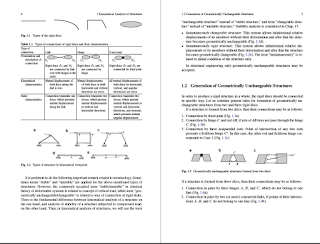THEORETICAL SOIL MECHANICS
KARL TERZAGHI
FREE DOWNLOAD PDF
ABOUT THE BOOK
Theoretical Soil Mechanics written by Karl Terzaghi, Late Professor of the Practice of Civil Engineering, Harvard University, Lecturer and Research Consultant in Civil Engineering, University of Illinois, is published by John Wiley and Son Inc.
The contents of this volume has been limited to theories which have stood the test of experience and which are applicable, under certain conditions and restrictions, to the approximate solutions of practical problems.
Besides providing the reader with a working knowledge of useful methods of analysis, theoretical soil mechanics also serves an important educational purpose. The radical separation between theory and application makes it easy to impress upon the reader the conditions for validity of the different mental operations known as theories. Once the reader has grasped, on the basis of the results of the analysis, the manifold factors which determine the behaviour of simple, ideal materials under the influence of internal and external forces, he will be less likely to succumb to the omnipresent danger of unwanted generalizations based on inadequate data.
ABOUT THE AUTHOR
Karl von Terzaghi (October 2,1883–October 25,1963) was an Austrian civil engineer and geologist known as the "father of soil mechanics" . In 1883, Karl von Terzaghi was born the first child of Army Lieutenant-Colonel Anton von Terzaghi and Amalia Eberle in Prague, in what is now the Czech Republic. Upon his father's retirement from the army, the family moved to Graz, Austria. The American Society of Civil Engineers established in 1960 the Karl Terzaghi Award to an "author of outstanding contributions to knowledge in the fields of soil mechanics, subsurface and earthwork engineering, and subsurface and earthwork construction". The Terzaghi and Peck Library, which is managed by the Norwegian Geotechnical Institute, in Oslo, Norway, holds an extensive collection of his papers. The Mission Dam in British Columbia, Canada, was renamed in his honor as the Terzaghi Dam in 1965.
CONTENTS
- INTRODUCTION
- STRESS CONDITIONS FOR FAILURE IN SOILS
- PLASTIC EQUILIBRIUM IN A SEMI-INFLUENCE MASS WITH A PLANE SURFACE
- APPLICATION OF GENERAL THEORIES TO PRACTICAL PROBLEMS
- ARCHING IN IDEAL SOILS
- RETAINING WALL PROBLEMS
- PASSIVE EARTH PRESSURE
- REARING CAPACITY
- STABILITY OF SLOPES
- EARTH PRESSURE ON TEMPORARY SUPPORTS IN CUTS, TUNNELS AND SHAFTS
- ANCHORED BULKHEADS
- EFFECT OF SEEPAGE ON THE CONDITION FOR EQUILIBRIUM IN IDEAL SAND
- THEORY OF CONSOLIDATION
- CAPILLARY FORCES
- MECHANICS OF DRAINAGE
- THEORIES INVOLVING A COEFFICIENT OF SUBGRADE, SOIL OR PILE REACTION
- THEORY OF SEMI-INFINITE ELASTIC SOLIDS
- THEORY OF ELASTIC LATERS AND ELASTIC WEDGES ON A RIGID BASE
- VIBRATION PROBLEMS
DETAILED CONTENTS
IN THE BOOK - SCREENSHOTS




















































